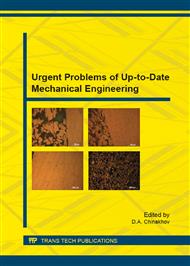p.701
p.705
p.709
p.714
p.718
p.723
p.729
p.735
p.739
Development of a System of Self-Assessment Indicators and its Optimization with the Help of Rasch Model
Abstract:
The paper discusses advantages and disadvantages of self-assessment of an organization conducted by filling out a reporting form. A questionnaire is suggested as a self-assessment tool together with a self-assessment structural model. It is proved that the process of obtaining more objective data can be regulated by reducing or increasing the number of performance indicators. Consideration is given to the process of self-assessment indicators development as an integral package and its subsequent optimization by means of Rasch model. Advantages of the measuring model are demonstrated and are supported by the results of self-assessments conducted in 7 organizations.
Info:
Periodical:
Pages:
729-734
Citation:
Online since:
June 2015
Authors:
Price:
Сopyright:
© 2015 Trans Tech Publications Ltd. All Rights Reserved
Share:
Citation:


